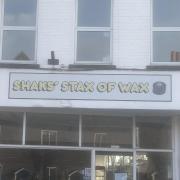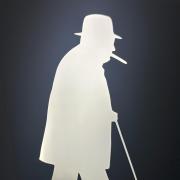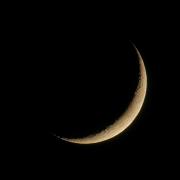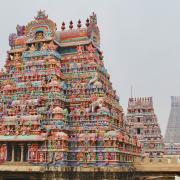
2020 saw some momentous acts of protest - from global Extinction Rebellion and Black Lives Matter marches to campaigns against lockdowns - and 2021 seems to be continuing this theme, with Trump supporters protesting the presidential election result by breaking into the Capitol building in Washington, DC. on Wednesday. However, it is clear that the dissent witnessed this week is set apart from the likes of the George Floyd protests, not only in its cause and methods, but also in the appalling yet unsurprising response it received from law enforcement.
On Wednesday, a mob of Trump supporters, fuelled by their leader’s many cries that the presidential election was ‘stolen’ from him, swarmed from across the country to storm Washington, D.C. in an attempt to stop the count of President-elect Joe Biden’s electoral college votes. As they continued to surpass police barricades, shatter the glass gallery doors and enter the Capitol building, disrupting the vote count and forcing politicians to be evacuated, rioters armed with firearms and Confederate flags defaced and destroyed the house of American democracy.
In the hours that followed, both politicians and the media condemned the violence, but the label with which the rioters were described varied, with right-wing news source Fox News calling them ‘protesters’, while CNN referred to them as a ‘mob’, ‘rioters’, and later called their actions ‘domestic terrorism’. This echoed the response from President-elect Joe Biden, who declared in a speech on Thursday from Wilmington, Delaware that “They weren’t protesters […] They were a riotous mob. Insurrectionists. Domestic terrorists. It's that basic. It’s that simple.”
Does the violence of the MAGA mob equate to the label of domestic terrorism? The FBI defines it as “Violent, criminal acts committed by individuals and/or groups to further ideological goals stemming from domestic influences, such as those of a political, religious, social, racial, or environmental nature.” From the sounds of gunshots and explosions, to the images of smashed windows and ransacked offices in the halls of Congress, to the discovery of pipe bombs and the death of a police officer, there’s no question of whether or not these horrific events and their perpetrators are fit for the description of terrorist activity. This is nowhere near the first time Trump’s supporters have been prepared to use deadly violence. Despite the President’s attempts to designate Antifa and Black Lives Matter as terrorist organisations, it does not deflect from the fact that white supremacists and far-right groups are responsible for the majority of U.S. domestic terrorist attacks, the 2019 El Paso shooter whose manifesto echoed Trump’s frequent warnings of an immigrant “invasion” being one amongst many. It’s clear that this attack cannot possibly be considered a protest; in the words of President-elect Joe Biden, “What we witnessed yesterday was not dissent, it was not disorder, it was not protest. It was chaos.”
How do the events which unfolded at the very house of American democracy compare to the protests which the world witnessed last year? Looking back at last June and the response to Black Lives Matter marches in the US after the murder of George Floyd is a chilling contrast to the police reaction to rioters on Wednesday. The thousands of protesters who took to the streets in June to demand justice for America’s crimes against black people were motivated by a painful history of institutional racism and police brutality in the US, triggered by the merciless killing of yet another unarmed black man, but were met with more violence - a raining down of rubber bullets and tear gas canisters - while white incendiaries were able to spend hours defacing a government building on Wednesday, before they were guided out of doors held open for them by police without arrest.
Last year, the armed DC National Guard fortified the steps of the Lincoln Memorial against crowds holding peaceful protests. On Wednesday, rioters were already inside the Capitol before the DC National Guard was even activated. While last summer in Washington, tear gas was burning the eyes of peaceful protesters, this week a Capitol Hill police officer took a selfie with a Trump supporter while he marched freely through the building. There is no need to ask how different Wednesday may have been different if the rioters were black - the very fact that a Trump supporter was able to lounge in a chair in the Senate without a scratch on his red MAGA hat when Breonna Taylor barely made it out of bed before she was shot dead by police in her own home is the epitome of white privilege.
How is this act of terrorism separate from protest and legitimate expressions of free speech? Writer and activist Bill McKibben believes that in contrast to the central ideas of nonviolent civil disobedience, the storming of the Capitol focused on violence and vandalism, with members of the mob carrying weapons and handcuffs. He said they “were intent on inflicting suffering and punishment on other people — it’s the opposite of civil disobedience. And oddly, it was met with the opposite reaction.” Anger at this opposite reaction is widespread, and has been expressed by The Black Lives Matter Global Network, who announced that it was "one more example of the hypocrisy in our country's law enforcement response to protest." In a statement, they made it clear that “if the protesters were Black, we would have been tear gassed, battered, and perhaps shot." Soon-to-be president Joe Biden agreed, declaring “that if it had been a group of Black Lives Matter protesters yesterday, they would have been treated very, very differently than the mob of thugs that stormed the Capitol. We all know that’s true. And it’s unacceptable. Totally unacceptable.” These words ring true for many in the aftershock of one of America’s most shameful days, as the world watches and waits in fearful anticipation of whether these domestic terrorists will be held accountable for their crimes, and what consequences may lie ahead for their leader.



























